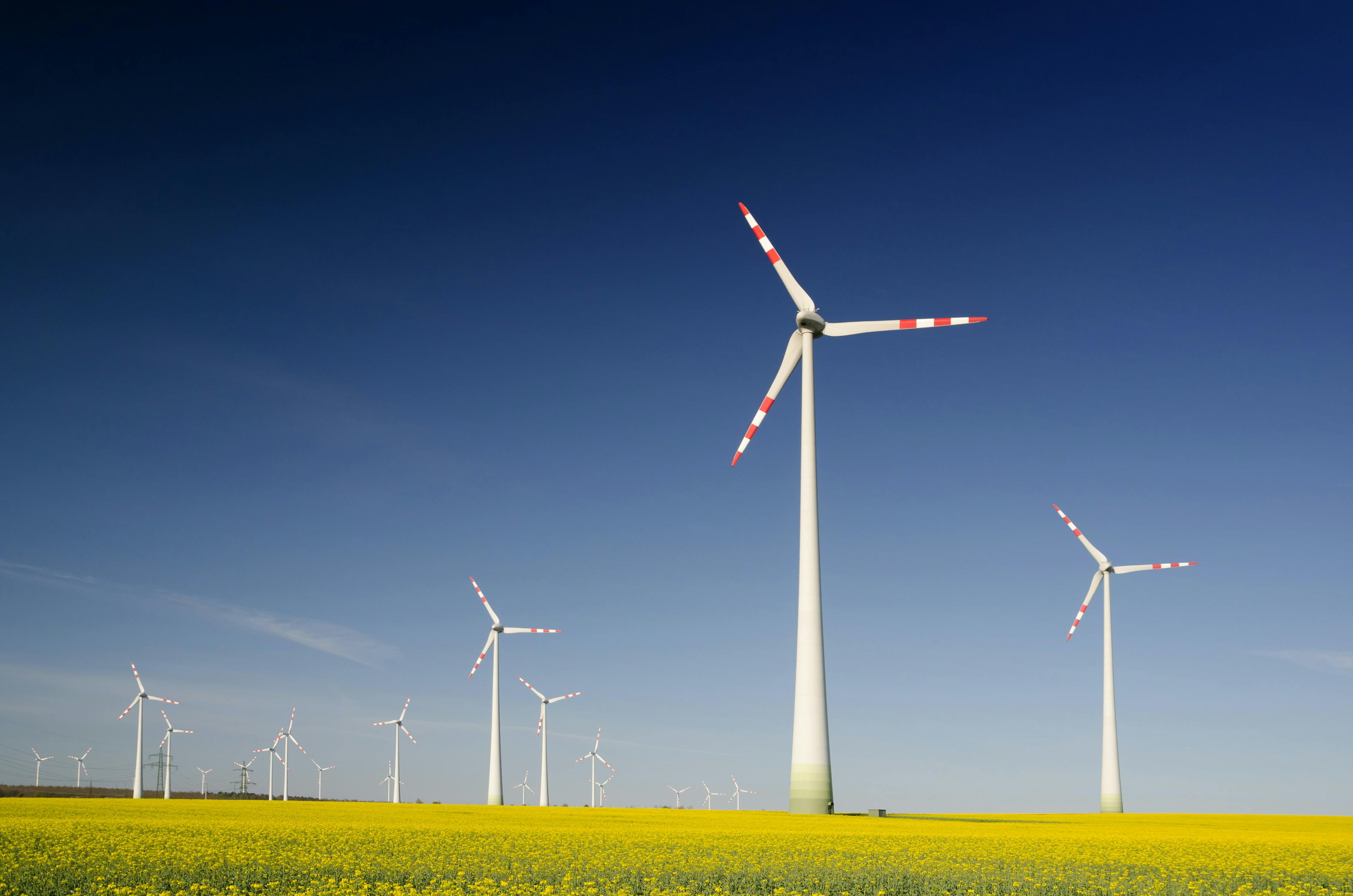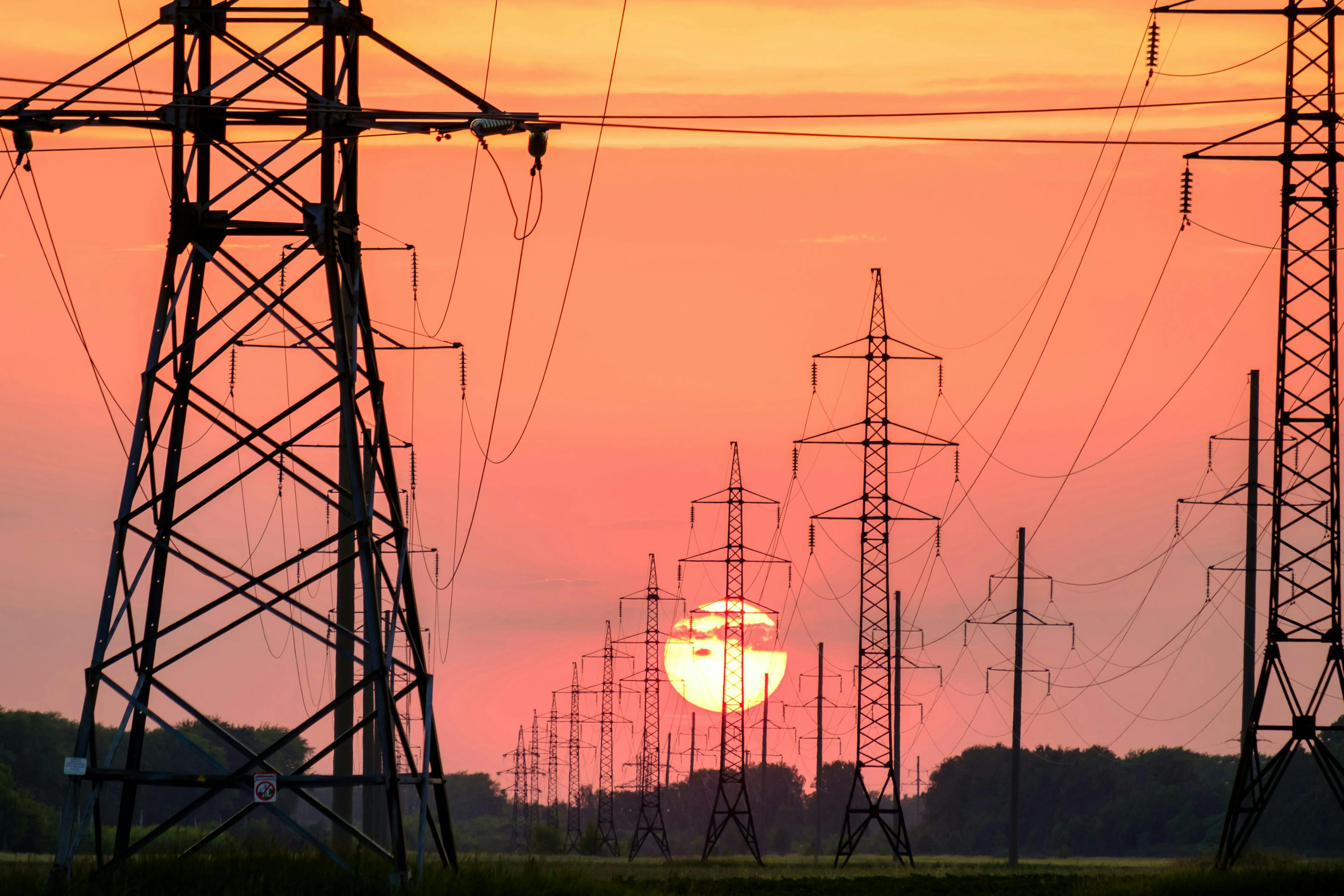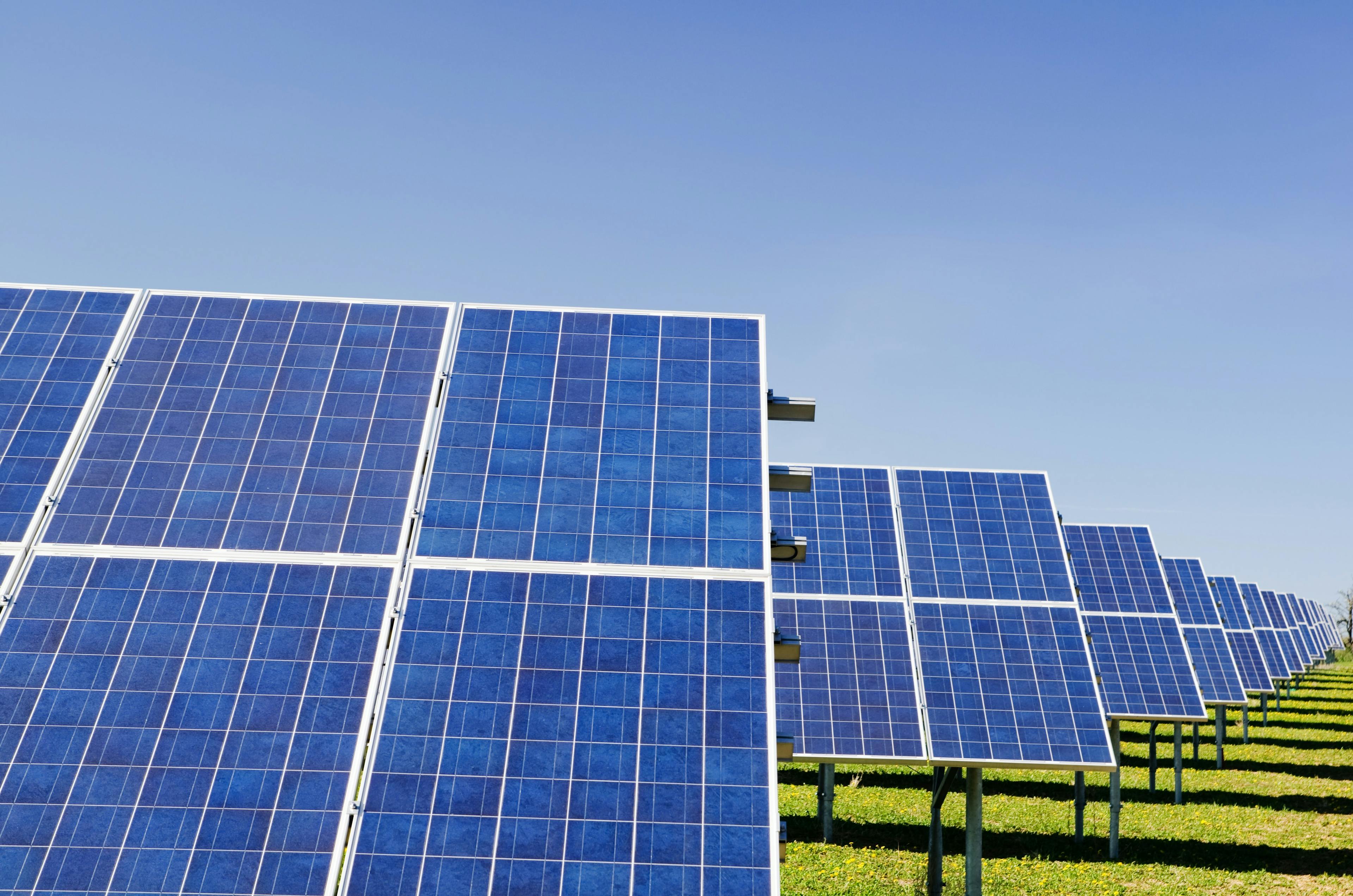What is Curtailment and How Does It Impact Renewable Energy?
28 Nov 2023

Introduction
As renewable energy adoption increases, it is important to understand what can hinder these projects. One of the biggest issues threatening the efficiency of these projects is curtailment. Curtailment of renewable energy sources occurs when projects must draw back on energy production when there is no benefit to increased production. This is the result of barriers such as poor storage solutions, weak grid infrastructure, and unfavourable supply and demand conditions. With these barriers in place, the unproduced energy due to curtailment is a financial and environmental loss. Understanding the root causes and consequences of curtailment is vital to identifying effective solutions to this pressing issue in the renewable energy industry. In this blog post, we will delve deeper into the factors driving curtailment, its implications, and how addressing this challenge is crucial for the future of renewable energy.
What is Curtailment?
Renewable energy sources are inherently volatile in energy generation over time. Any surplus is called excess electricity. In the past, excess electricity produced by renewable power plants could be fed back into a grid through a process called net metering. This excess electricity could also be stored, sold, or donated. Nowadays, the amount of excess electricity that can be produced by a system is limited by the developer through a process called curtailment. Curtailment in the renewable energy sector refers to the deliberate restriction of electricity generated from renewable sources to prevent grid overloads and mitigate negative price scenarios. It entails energy projects operating at a fraction of their maximum capacity to match the current demand for electricity that can be taken away from the project.
This practice poses a significant challenge because many renewable energy facilities rely on stable electricity revenues through PPAs to cover their substantial fixed costs and debt obligations. By stifling energy production, these plants forego potential revenue opportunities. Moreover, curtailment can have far-reaching consequences, impacting not only the financial viability of renewable projects but also environmental concerns and grid stability, especially when conducted at utility-scale.

Causes of Curtailment
There are several underlying factors that contribute to the curtailment of renewable energy sources. These causes can be broadly categorised into two primary drivers: grid limitations and economic considerations.
Grid limitations
Inadequate Grid Infrastructure
Grid limitations are a significant factor contributing to the curtailment. As electricity demands have increased with population increases, the capacity to accommodate this on the grid has not kept up. Out-dated grids have been highlighted with the adoption of utility-scale projects where the deliverability away from the project via the grid is often saturated. One alternative is to store energy onsite and deploy it back to the grid when there is capacity.
This capacity limitation often results in a situation known as "source overfill." During peak periods, such as windy or sunny days, electricity production can exceed the grid's import capacity. Without curtailment, the result is the risk of grid blackouts, particularly in rural regions with weak grids and insufficient distribution capabilities.
Grid Frequency and Blackout Risk
Electricity grids operate at a standard frequency of 60 hertz. Excessive electricity generation can disrupt this frequency, posing a severe risk of disconnection and potential blackouts. Again, curtailment is a preventive strategy to maintain the standard frequency of grids.
Volatility of Renewable Energy Sources
The inherent volatility and seasonality of renewable energy sources, such as wind and solar, contribute to periods of excess energy generation, particularly when demand is low. In the absence of efficient energy storage solutions, this surplus energy cannot be effectively stored for later use or distributed to regions with higher demand. Consequently, curtailment becomes an unfortunate outcome, preventing the wastage of excess energy.
Economic considerations
Economic and market factors also play a pivotal role in curtailment. Often, renewable energy is bought and sold through PPAs, contractural obligations that lock in energy prices for 10-25 years. Renewable energy can also be sold on the spot market, which is a live commodities market for electricity. Energy is sold for cash and delivered to a specific location on the day of or after the sale. In the spot market, electricity is the commodity meaning that the source, whether renewable or not, is not a consideration for the buyer.
With normal supply and demand conditions, prices for energy are positive. Negative power prices are rare and typically occur during periods of low demand, when electricity oversupply is more likely, hence leading to a sharp drop in prices. In this scenario, producers have to pay to supply excess electricity to the grid. The drop causes grid operators to dial down on electricity production. Negative prices can disincentivise renewable energy generation during periods of oversupply, as it becomes economically unviable. For example, consider the case of Australia on September 19, 2021. On this sunny day, electricity supply from solar and wind farms outpaced demand, leading to negative energy prices per the National Electricity Market. In response, some renewable energy generators chose to curtail their production to avoid financial losses, resulting in over 3,000,000kWh of wind and solar energy being lost.

Impacts of Curtailment
Curtailment extends its consequences across multiple facets, affecting the economy, environment, and grid infrastructure.
Economic impacts
The economic efficiency of renewable energy is compromised when energy resources go under-utilised. Many renewable projects entail substantial fixed costs and often require significant debt financing. Curtailment not only represents an operational inefficiency that poses a long-term economic risk to developers.
For instance, in California, a state with abundant sunshine and heavy investment in solar infrastructure, solar generation has surpassed grid capacity upgrades, resulting in grid congestion. As a result, solar and wind producers are increasingly being directed to halt production. As of 2023, California curtailed 500 gigawatt hours of energy. To put that into perspective, that is enough energy to power approximately 40,000 households for a year.
The problem in California is twofold, overloading the grid and missing opportunities to displace fossil fuels. In some instances, California is producing so much solar energy that it has had to pay neighbouring states, such as Arizona, to absorb its excess energy, even with curtailment in place. This represents a massive economic loss for California. Moreover, this energy sale does little to curb greenhouse gas emissions. Instead, Arizona Public Service curtails its own solar generation rather than fossil fuel power.
Environmental impacts
Curtailment goes beyond just economic concerns; it also bears environmental consequences. Missing opportunities to displace fossil fuels when renewable energy is curtailed can perpetuate reliance on carbon-intensive energy sources, leading to increased greenhouse gas emissions. Building renewable energy systems necessitates the consumption of finite environmental resources. When energy is curtailed, the environmental costs associated with manufacturing renewable systems become disproportionately high, as the energy generated fails to offset these resource depletions adequately.
Grid-related impacts
Curtailment places significant demands on the grid infrastructure. When energy generation is curtailed, grid operators must continuously balance supply and demand with other resources, potentially leading to operational challenges and grid instability. This, in turn, can result in delays in much-needed investments in grid upgrades.
Areas without grid upgrades may experience insufficient transmission capacity, creating a positive feedback loop that makes curtailment more likely. Take California for example, their grid infrastructure is not developed to keep up with the solar energy being produced. This poses a litany of problems, from grid damage to the risk of blackouts.
Curtailment Policy and Regulation
Policymakers play a crucial role in shaping the landscape of renewable energy curtailment through regulations and energy market reforms. These policies can either inhibit or prohibit curtailment and have far-reaching implications for the efficiency and sustainability of renewable energy systems.
European Commission State Aid Guidelines
Under European Commission state aid guidelines, renewable energy generators are encouraged to produce electricity when it is needed and avoid doing so during periods of negative energy prices. The rationale behind this approach is to align energy production with demand and reduce wastage. This can have massive negative impacts as strict application of this guideline can result in significant curtailment.
Germany’s Approach
To address this issue, Germany has negotiated an agreement with the European Commission that offers flexibility in the application of this guideline. In Germany, this regulation does not come into effect until energy prices have remained negative for six consecutive hours or more. This prevents hourly curtailment and almost halves energy costs.
Curtailment Caps
In addition to flexibility in regulation, another effective policy tool is the imposition of curtailment caps. These caps limit the amount of energy that can be curtailed by a renewable energy system. By defining specific limits, policymakers ensure that curtailment remains within acceptable thresholds, reducing energy wastage and its associated economic and environmental impacts.
Net Metering Policies
Net metering policies are instrumental in reducing curtailment, particularly in residential and commercial settings. These policies allow small-scale developers to feed surplus electricity back into the grid, with credits applied to their utility bills. Net metering reduces curtailment in retail by incentivising the efficient use of surplus renewable energy. It's important to note that net metering typically does not apply to utility-scale projects, as the primary focus is on smaller-scale distributed energy generation.

Case Studies and Success Stories
One promising avenue for addressing economic curtailment in the renewable energy sector is the adoption of advanced Long-Duration Energy Storage (LDES) technology. Spain, with its ambitious renewable energy goals and the challenges of curtailment, serves as an illuminating case study.
The Challenge: Curtailment in Spain
In recent years, Spanish generators have been faced with a challenge: the running costs of renewable energy production often exceed the wholesale electricity market prices. This has led to the economic curtailment of renewable energy in Spain.
With plans to add an additional 85 gigawatts (GW) of renewable capacity by 2030, Spain has set an ambitious goal. Under the prevailing conditions, projections suggest that approximately 5% of the total renewable electricity generated between 2025 and 2035 could be curtailed due to economic factors. This wasted energy equates to nearly two years of household electricity consumption in Spain.
The LDES Solution
Spain has identified a solution to this challenge through the adoption of Long-Duration Energy Storage (LDES) technologies. These innovative technologies offer the capability to store energy for extended periods, ranging from 8 hours to four days. LDES technologies encompass novel solutions such as pumped hydropower, flow batteries, and compressed air storage. LDES assets store energy efficiently, making it available for supply to the grid precisely when it's needed. This approach effectively addresses medium-term variations in electricity supply and demand, mitigating the risk of curtailment.
The Impressive Impact
With the installation of 15 GW of electrical energy storage, Spain has the potential to eliminate economic curtailment by 2035. LDES assets play a dual role by providing essential grid services that enhance the operability of the electricity network.
By enabling the earlier phase-out of high-carbon power sources, LDES contributes significantly to emissions reduction. In the context of Spain, this scenario brings the country toward its Net Zero goal by 2045, five years earlier than what could be achieved without LDES technology. Moreover, it reduces emissions from non-renewables and curtails natural gas consumption.
PF Nexus
PF Nexus is paving the road for renewable energy investment by connecting project developers with investors more efficiently. Our platform serves as a centralised hub for business development and investment teams to identify, research, and explore renewable energy investment opportunities. With a platform of more than 5,500 users from over 3,000 clean energy investors, advisors, and developers, PF Nexus is at the forefront of innovation. Subscribers gain access to an ecosystem database and project marketplace, where they can evaluate deals and collaborate with transaction advisors and project owners in the renewable sector. The platform offers a diverse investment portfolio, supporting various renewable projects, such as utility-scale solar, wind, battery, and other sustainable infrastructure. As countries strive towards Net Zero emissions, and the energy transition continues to progress, PF Nexus is rapidly gaining traction in the industry.
Conclusion
Curtailment can have a dangerous impact on the transition to renewable energy. Across the globe, projects are being stifled by grid limitations and economic constraints. With targets towards net zero, renewable energy plants must run as efficiently as possible to make energy affordable and sustainable.
Resources